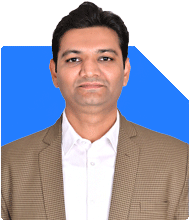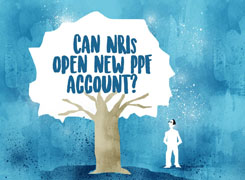Ramalingam Kalirajan |8442 Answers |Ask -Follow
Mutual Funds, Financial Planning Expert - Answered on Jun 03, 2024
He has an MBA in finance from the University of Madras and is a certified financial planner.
He is the director and chief financial planner at Holistic Investment, a Chennai-based firm that offers financial planning and wealth management advice.... more

I have invested 15 lac for 5 yrs with swp of 10500 per month on SBI dividend yield fund what will be the corpus I will get
Your current financial strategy involves investing Rs 15 lakhs in the SBI Dividend Yield Fund with a Systematic Withdrawal Plan (SWP) of Rs 10,500 per month for 5 years. Given your age of 49, this strategy should be analyzed to ensure it aligns with your long-term goals and provides a secure retirement.
Understanding SWP and Mutual Funds
Systematic Withdrawal Plan (SWP):
SWP allows you to withdraw a fixed amount from your mutual fund investment at regular intervals. This helps in managing your cash flow for monthly expenses while staying invested.
Mutual Funds:
Investing in mutual funds, such as the SBI Dividend Yield Fund, can potentially provide higher returns over time. Dividend yield funds focus on investing in companies that pay regular dividends, offering a mix of income and growth.
Option 1: Continuing with SWP
Pros:
Regular Income: SWP provides a steady monthly income, useful for managing regular expenses.
Potential Growth: Remaining invested in the fund allows the remaining corpus to grow, benefiting from market upswings.
Rupee Cost Averaging: SWP helps in managing market volatility, averaging the purchase price over time.
Cons:
Market Risk: The value of your remaining investment can fluctuate with market movements, affecting the overall corpus.
Potential Depletion: Regular withdrawals may deplete your investment faster if the fund underperforms.
Option 2: Investing Lump Sum in a Diversified Portfolio
Pros:
Higher Growth Potential: Diversifying across different funds can potentially yield higher returns.
Risk Management: A well-diversified portfolio balances risk and returns, protecting against market volatility.
Long-Term Benefit: Equity investments generally perform better over long periods, outpacing inflation.
Cons:
Market Risk: Initial lump sum investments are exposed to market volatility, impacting short-term value.
Requires Discipline: Managing a diversified portfolio requires regular monitoring and adjustments.
Certified Financial Planner (CFP) Guidance
1. Personalized Financial Assessment:
A CFP can provide a detailed analysis of your financial situation, goals, and risk tolerance. This helps in making an informed decision.
2. Risk Assessment:
Understanding your risk appetite is crucial. A CFP will assess how much risk you can afford to take given your age and retirement goals.
3. Diversified Portfolio:
A CFP will help create a diversified portfolio. This includes a mix of equity, debt, and hybrid funds to balance risk and returns.
4. Regular Monitoring:
With a CFP, you can regularly monitor and adjust your investments. This ensures your strategy remains aligned with your goals and market conditions.
Analyzing the Best Strategy for You
1. Risk Tolerance:
If you have a low risk tolerance, continuing with the SWP is safer. If you are comfortable with market fluctuations, a lump sum investment might be better.
2. Investment Horizon:
Since you have a 10-15 year horizon, equity investments can potentially offer better returns. This is due to the power of compounding and the historical performance of equities over long periods.
3. Financial Goals:
Clearly define your retirement goals. This includes the amount needed and the timeframe. A CFP can help in setting realistic goals and creating a plan to achieve them.
Practical Steps for Implementation
1. Continue Monthly SWP:
If you choose to continue with SWP, ensure you select funds that align with your risk profile and investment horizon.
2. Lump Sum Investment:
If you decide on a lump sum investment, diversify your portfolio. Invest in a mix of equity, balanced, and debt funds to manage risk.
3. Emergency Fund:
Ensure you have an emergency fund equivalent to 6-12 months of expenses. This provides liquidity for unforeseen circumstances.
4. Regular Review:
Regularly review your investments with a CFP. This ensures your portfolio remains balanced and aligned with your goals.
Tax Efficiency
1. Tax-Saving Investments:
Invest in tax-efficient instruments like ELSS (Equity Linked Savings Scheme) funds to optimize your tax liability.
2. Capital Gains Tax:
Understand the tax implications of mutual fund investments, especially long-term capital gains tax.
Projecting the Corpus
Assuming an average return of 8% per annum from the SBI Dividend Yield Fund:
Initial Investment: Rs 15 lakhs
Monthly SWP: Rs 10,500
Investment Period: 5 years
To project the corpus at the end of 5 years, consider the following:
The corpus will grow based on the fund's performance.
Regular withdrawals will reduce the corpus.
Since exact calculations require precise data and assumptions, a CFP can provide a detailed projection based on your specific fund performance and withdrawal plan.
Conclusion
Investing your FD interest in SIPs is a disciplined and safer approach. However, a lump sum investment in mutual funds offers higher growth potential over the long term. Your decision should be based on your risk tolerance, financial goals, and investment horizon. Consulting a certified financial planner will provide personalized guidance and help you create a diversified and tax-efficient portfolio. This will ensure a secure and comfortable retirement.
Best Regards,
K. Ramalingam, MBA, CFP,
Chief Financial Planner,
www.holisticinvestment.in
You may like to see similar questions and answers below
Ramalingam Kalirajan |8442 Answers |Ask -Follow
Mutual Funds, Financial Planning Expert - Answered on May 30, 2024
Ramalingam Kalirajan |8442 Answers |Ask -Follow
Mutual Funds, Financial Planning Expert - Answered on Apr 30, 2024
Ramalingam Kalirajan |8442 Answers |Ask -Follow
Mutual Funds, Financial Planning Expert - Answered on May 30, 2024
Ramalingam Kalirajan |8442 Answers |Ask -Follow
Mutual Funds, Financial Planning Expert - Answered on May 22, 2024
Dr Nagarajan J S K |401 Answers |Ask -Follow
NEET, Medical, Pharmacy Careers - Answered on May 15, 2025
Dr Nagarajan J S K |401 Answers |Ask -Follow
NEET, Medical, Pharmacy Careers - Answered on May 15, 2025
Dr Nagarajan J S K |401 Answers |Ask -Follow
NEET, Medical, Pharmacy Careers - Answered on May 15, 2025
Dr Nagarajan J S K |401 Answers |Ask -Follow
NEET, Medical, Pharmacy Careers - Answered on May 15, 2025
Dr Nagarajan J S K |401 Answers |Ask -Follow
NEET, Medical, Pharmacy Careers - Answered on May 15, 2025
Dr Nagarajan J S K |401 Answers |Ask -Follow
NEET, Medical, Pharmacy Careers - Answered on May 15, 2025
Vipul Bhavsar |83 Answers |Ask -Follow
Tax Expert - Answered on May 15, 2025
Vipul Bhavsar |83 Answers |Ask -Follow
Tax Expert - Answered on May 15, 2025
Vipul Bhavsar |83 Answers |Ask -Follow
Tax Expert - Answered on May 15, 2025
Vipul Bhavsar |83 Answers |Ask -Follow
Tax Expert - Answered on May 15, 2025























